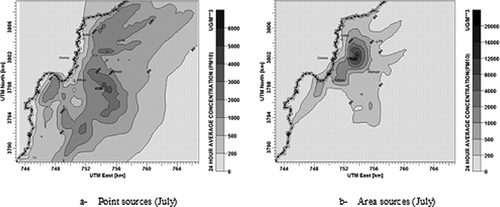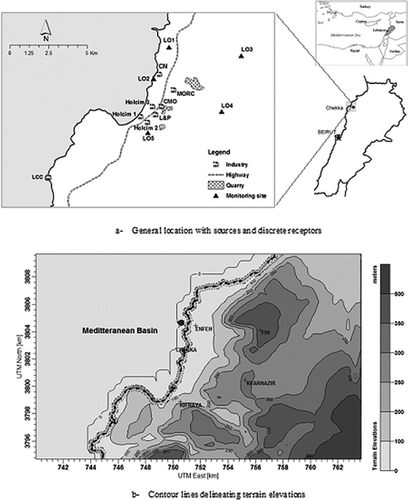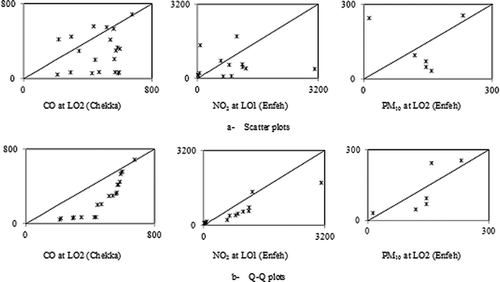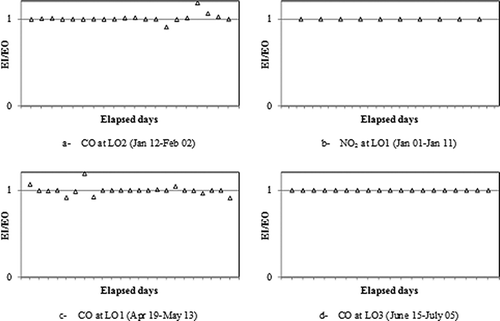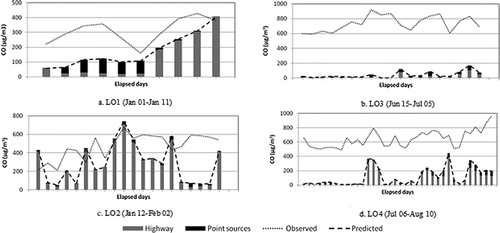Figures & data
Table 1. Characteristics of the main plants in the study areaFootnote a
Table 2. Physical characteristics of modeled source groups
Table 3. Summary of field monitoring campaign for CO, NO2, and PM1 0
Table 4. Range of emission factors (g/sec)
Table 5. Statistical analysis of model simulations against field measurements for CO and NO2
Table 6. Statistical analysis of model simulations against field measurements for PM10
Table 7. Source contribution to the highest weekly average CO concentration
Figure 6. Spatial distribution of the 24-hr average CO concentration during winter and summer (colour figure avilable in online).
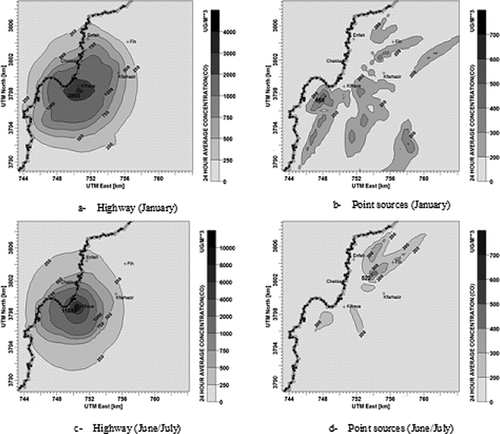
Table 8. Source contribution to the highest weekly average NO2 concentration
Figure 8. Spatial distribution of the 24-hr average NO2 concentration during winter and summer (colour figure avilable in online).
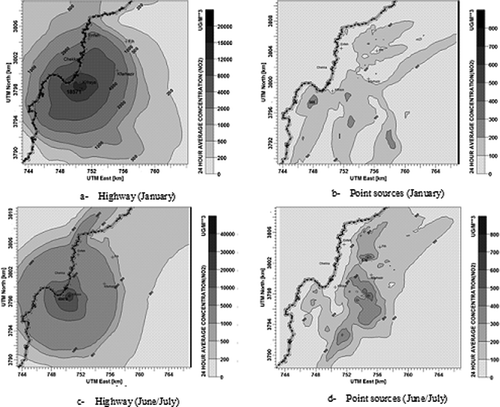
Figure 9. Spatial distribution of the 24-hr average PM10 concentration during summer (colour figure avilable in online).
